Heated towel rail is a very popular bathroom accessory. He and towels will dry, and expel excess moisture from the room after bathing. And at the same time the room warms up so that you do not freeze, standing naked. But despite all the simplicity of the design, the price of the dryers is rather large. It's a shame to spend a few tens of thousands of rubles on the coil, which can not justify your expectations. Therefore, before buying, we recommend that you read the expert advice on choosing these heaters.
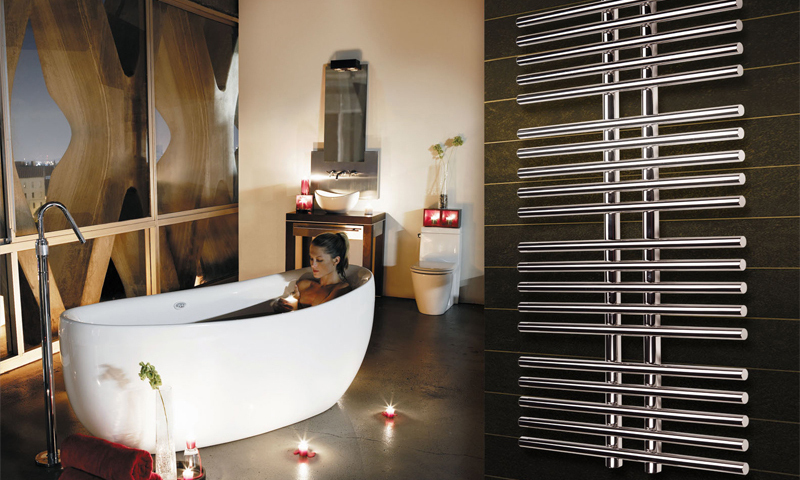
Contents:
- The best manufacturers of heated towel rails
- How the towel warmers work
- Types of heated towel rails
- Options for selecting the
- towel heater What kind of towel warmer to choose
- How much does the towel warmer
? The best towel warmer manufacturers - which company to choose
? A good towel warmer, like any other product,from well-known manufacturers. Not only do they constantly improve their series, they also strictly monitor quality, not allowing marriage.
Many large companies communicate with their customers and take their opinions into account when creating new models. And the most eminent have even a staff of designers who along with designers are engaged in the development of original heated towel rails that perfectly fit into the bathroom interior.
When we talk about good manufacturing companies, we mean the following brands:
- Arbonia;
- Margaroli;
- Zehnder;
- Terminus;
- TermoSmart.
You will get acquainted with the best towel radiators from these companies in our rating. However, the name of the brand is just the beginning of the choice. To buy a good dryer for adequate money, will have to consider other criteria.
Principle of operation and the construction of heated towel rails
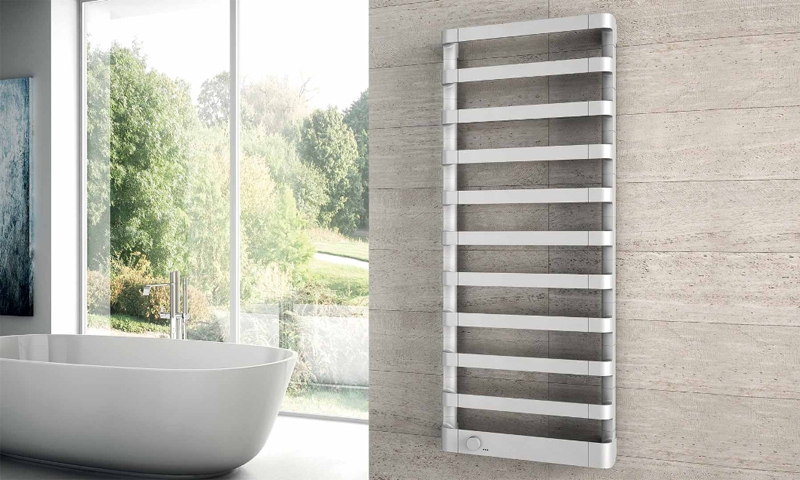
At its core, any heated towel rail is a radiator. By the way, its task is precisely the drying of not only towels, but also an excessively damp bathroom. Regardless of the type, it is a tube-coil over which the working fluid circulates.
Then everything determines the type of dryer. If it is a water model, fittings for connecting it to the heating system are included in it, if the electric heater is an internal heater with its cord and plug.
The principle of operation of such devices is simple: by heating due to the high temperature of the internal heat carrier, the pipes evaporate moisture from things hung on them and dry the air in the bathroom. Usually such a "battery" is attached to the wall, but there are also floor models.
Types of towel warmers
Water
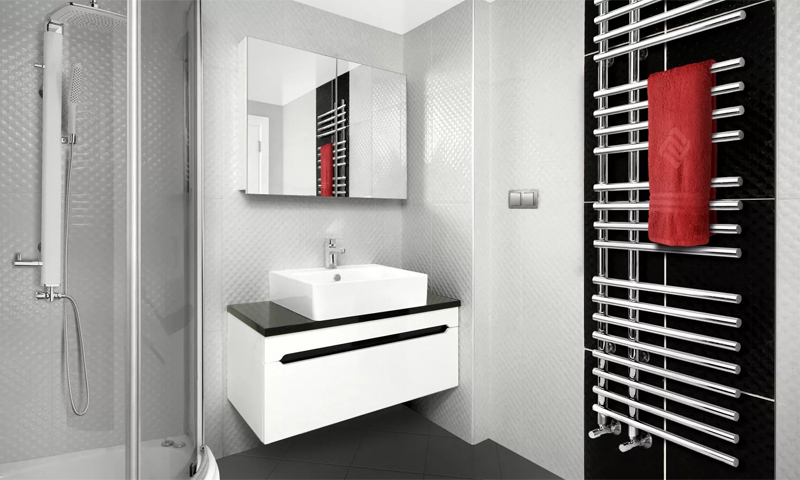
The old kind coils have been familiar to us since the times of the USSR.Unless in recent years they have become much more effective and elegant.
The water towel heater is connected to the existing heating system, regardless of its type( central or individual).If the bathroom has a water-heated floor, the dryer can even be embedded in a common line, however, then its temperature will be as low as in the lower branch.
On the one hand, water coils are good because they do not directly depend on electricity supply. On the other hand, they work only when there is hot water in the heating circuit, which means that in summer they become useless.
Of course, you can connect the heated towel rail to the DHW circuit, but far from all houses and cities hot water is supplied centrally and without interruption.
Pros:
- Energy-independent;
- Effective room heating and drying;
- Simplicity of construction;
- No maintenance required;
- Security;
- Low cost.
Cons:
- Depends on the availability of hot water;
- Often it is in these that air cork is formed;
- Like radiators, over time, build up a scum or corrode from the inside.
Electrical
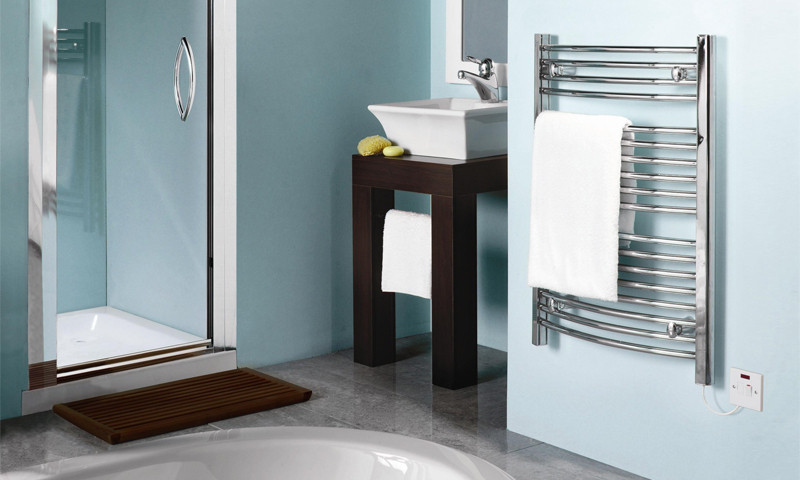
These are separate "batteries" with a closed loop. Because of the design features, they have a slightly larger dimensions, because inside the place is required for the installation of the TEN.But such towel warmers can be mounted anywhere in the room - if only at the distance of the length of the cord there was an outlet for 220 V.
Depending on the chosen coolant, the electric models are divided into two types:
1. Oils - characterized by good heat capacity.
2. "Dry" - in such towel-warmers there is no heating element that heats the liquid, but simply a cable is laid.
Pros:
- Reliability and long service life;
- Independence from the aqueduct;
- Efficient drying with relatively low power consumption( up to 150 W);
- The towel lifter can be switched off at any time.
Cons:
- Dependence on electricity;
- High cost.
Also electric models, unlike water ones, can have a whole set of additional functions, for example, a timer, a thermostat and a safety automatics.
Combined
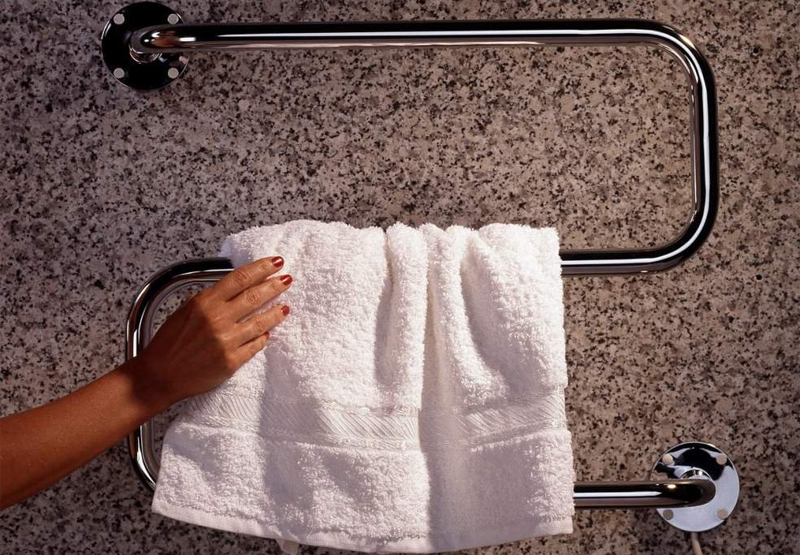
These universal models combine the advantages of water and electric heated towel rails, that is, they can be podkydyvatsya both to hot water or heating, and to the network. Accordingly, their configuration includes fittings( nuts, bushings, gaskets, etc.), and a cord with a plug.
When connected to all communications, you can use the dryer all year round: in the winter from the heating system, in summer, from the outlet. One problem is the choice of the installation site, which will allow for a double installation.
Pros:
- Possibility to use different heat sources;
- Easy to operate;
- Cost-effective power consumption.
Cons:
- The complexity of installation;
- High price.
Options for choosing a heated towel rail
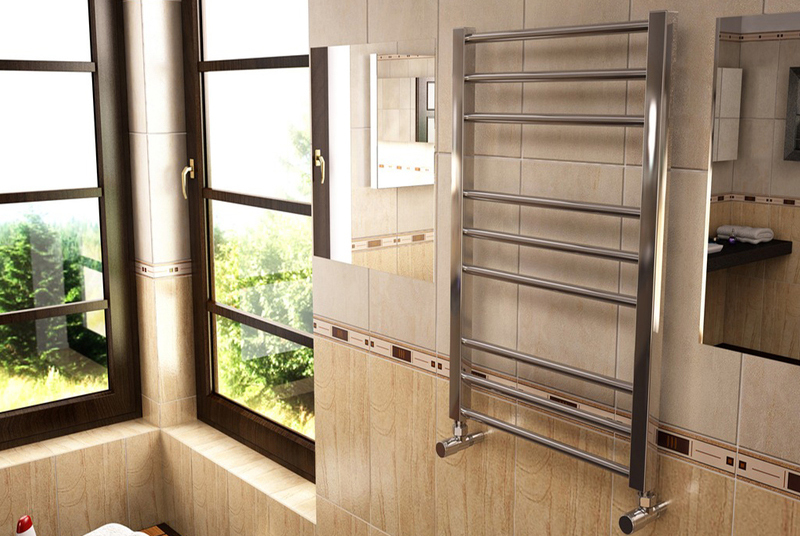
Construction material
Of course, when choosing a water towel, you will have to consider materials that are already used in the main system. It is extremely undesirable to combine different metals with each other. But it is still necessary to know the peculiarities of these or other models of dryers.
1. Chermet - ordinary painted steel, capable of withstanding the pressure in the individual heating system. For the central one, it also suits, but only if there are not more than 6 atmospheres in the pipes. Such towel warmers do not have the best thermal conductivity, but eventually rust and flow. But they are inexpensive.
2. Stainless steel - similar to the model, have an all-welded construction and are not afraid of rust. However, it is the seams on the stainless steel that are a weak point, since it is technically very difficult to get a reliable tight joint on this metal. Weigh a product like ordinary steel, only costs 2-3 times more expensive.
3. Copper-coils of this metal are among the best for connection to the water circuit. They calmly tolerate high pressure in the system and hydraulic shocks, have anti-corrosion effect and in the interior look just gorgeous. Copper dryers are universal, have a small weight and good heat dissipation, but are not cheap.
4. Brass has the same advantages as pure copper, except for the most important - it is not designed for high pressure in pipes. Brass towel warmers are better to connect to individual heating or use electric models.
Form of coil
Towel rails can have the most bizarre shape, but the most common are U-shaped, M-shaped and ladder.
The number of horizontal sections will determine how many towels can be hung at the same time on this battery. Otherwise, there are no special recommendations on this matter - the main thing is that the dryer fit into the bathroom interior.
Power( for electric models)
The power of a heated towel dryer depends not only on the drying speed of the items, but also on the temperature in the bathroom.
To maintain it at a level of +25 ° C, it is necessary that for each square meter of area there is about 140 W of heat. Just consider the other heating devices that are in the bathroom - they too have to participate in the calculation.
Connection method( for water and universal models)
Like heating radiators, heated towel rails can be connected in different ways to a hot branch. And this will determine the effectiveness of its work, that is, the degree of heat transfer.
The following connection methods are distinguished:
1. Lower connection - inlet and outlet nozzles are located at the bottom. Effective enough way, as hot water will immediately be forced into the upper part of the coil and pass through the entire pipe, giving away its heat.
2. Upper - input and output, respectively, are located at the top. This design is considered ineffective, since the bottom of the heated towel heater will always remain cold, and the cooled heat carrier will become more difficult to climb to the outlet.
3. Diagonal - an excellent option, especially if water comes from the upper corner, but comes from the opposite bottom, giving maximum heat to the room.
4. Lateral is a popular method where the supply is from top to bottom, but both nozzles are located on one side of the heated towel rail. This installation makes it possible to install the device anywhere in the bathroom.
Installation location
The design of the towel heater fixtures largely determines the installation possibilities and the space occupied by it.
For this parameter, the coils are divided into:
1. Wall-mounted - the most popular models that save a lot of space in the bathroom.
2. The floorboards are slightly larger and because of the features of the installation they steal a part of the area. However, if you have a fairly spacious bathroom, such a device can become a good zoning element.
3. Folding - actually it is one of the modifications of wall towel rails, only having the ability to rotate 180 degrees around the fastening axis. Alas, this solution does not add the design of durability - in places of bending, leaks often begin to leak.
4. Portable - and here we are dealing with a variation on electric towel warmers. Since they only need a socket to work, the device can be freely transferred from place to place and used in other rooms.
What kind of towel dryer to choose
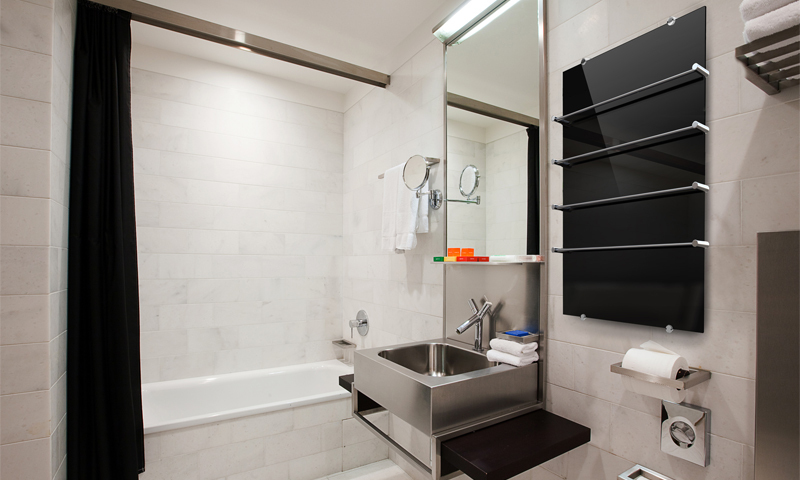
1. If the hot water in your house goes all year round, it's better to take a water towel - save on electricity. Here, the work will be handled well by the blacksmith, but if the pressure in the system is quite high, do not stint and buy a copper device.
2. In the private sector, where heating and DHW are the merit of the owners themselves, it is also permissible to use a water coil. Here you can put stainless steel or even brass, if the funds permit.
3. When the house has a permanent interruption of hot water, it is better to immediately buy an electric or more universal combined heated towel rail. So you can use it at any time, and in the winter even on electricity you will save. Just take a corrosion-resistant metal - copper, brass or stainless steel. Conventional steel does not tolerate constantly changing operating modes.
How much does the towel warmer
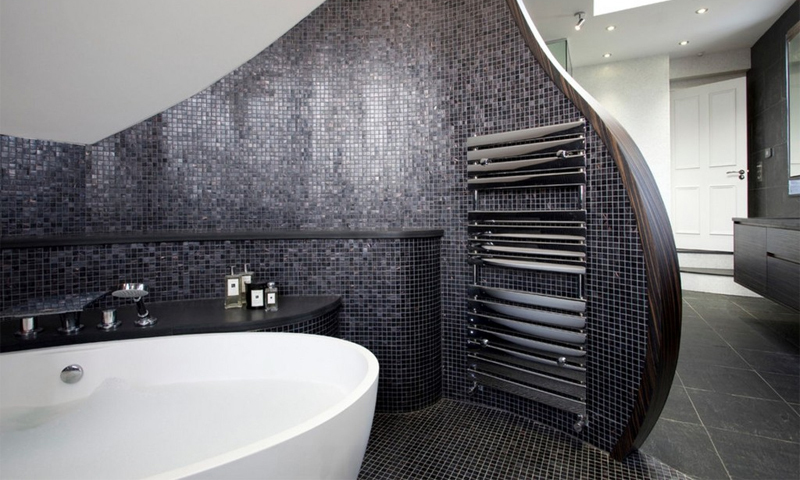
1. Water models cost less than everything, although here everything depends on the material of manufacture, the complexity of the design and brand fame. Steel goes within 750-195000 rubles, stainless steel can pull and a half million. The ceiling for copper appliances does not exceed 130 thousand rubles, for brass - 200 thousand with a minimum price of 2500 rubles.
2. Steel electric towel warmers are presented in the price range from 1000 to 213 thousand rubles.(stainless steel is traditionally more expensive).For the copper model, which is fed from the grid, it will be necessary to pay from 16 to 80 thousand, brass and at all costs extra money - at least 10 thousand rubles, a maximum of 11 million.
3. The cost of combined heated towel rails from stainless steel ranges from 3 thousand to 2 million rubles, the chermet will be three times cheaper. Brass universales start from 5000 rubles and reach 12 million
